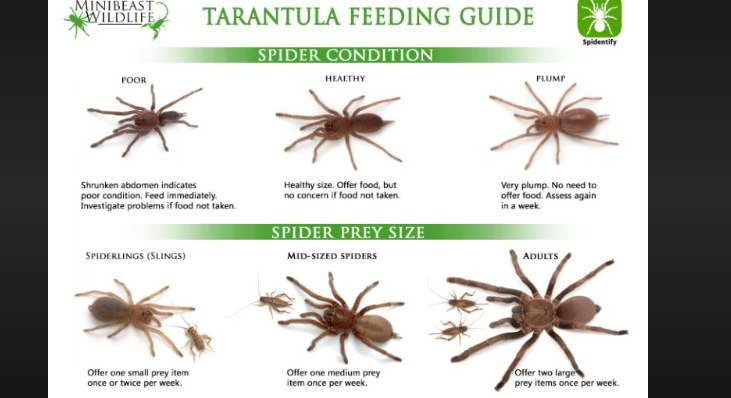Tarantula Feeding Habits: How Long Can Tarantulas Go Without Eating?
Tarantulas, with their fascinating appearance and mysterious behaviors, have captured the curiosity of arachnid enthusiasts and pet keepers alike. Among the many questions that arise regarding these creatures, one commonly asked is, "How long can tarantulas go without eating?" In this article, we will explore the feeding habits of tarantulas, the factors that influence their eating patterns, and how tarantula enthusiasts and pet owners can ensure the well-being of these unique creatures.

Tarantula feeding guide
1. The World of Tarantulas
Before we delve into the specifics of tarantula feeding habits, let's gain a general understanding of these intriguing arachnids.
1.1. Diversity of Species: Tarantulas belong to a diverse group of spiders, with species inhabiting various regions across the globe. Their sizes, colors, and behaviors vary significantly, making them a captivating subject of study.
1.2. Hunting Techniques: Tarantulas are primarily carnivorous, using their venomous bites to immobilize and consume prey. They rely on their silk-producing abilities for creating shelters and capturing food.
2. Feeding Frequency and Patterns
The frequency at which tarantulas eat can vary depending on factors such as species, age, and environmental conditions.
2.1. Species Variation: Different tarantula species have evolved to thrive in diverse habitats. As a result, their feeding habits can range from frequent feeding to more sporadic patterns.
2.2. Age and Growth Phases: Younger tarantulas generally have a higher metabolic rate and may require more frequent feeding compared to adults. Adult tarantulas, on the other hand, tend to eat less frequently.
2.3. Molting Process: Tarantulas molt periodically to shed their exoskeleton and grow. During the molting process, they refrain from eating, focusing on shedding their old skin and forming a new one.
2.4. Environmental Factors: Environmental conditions, such as temperature and humidity, can influence a tarantula's appetite. Changes in these factors may lead to altered feeding behaviors.
3. How Long Can Tarantulas Go Without Eating?
The duration that tarantulas can go without eating varies based on factors like species, age, and individual health.
3.1. Adult Tarantulas: Adult tarantulas are known for their ability to tolerate longer periods without food. Depending on the species, an adult tarantula can go without eating for several weeks to several months.
3.2. Younger Tarantulas: Younger tarantulas, due to their higher metabolic rate and rapid growth, typically need to eat more frequently. Some may require feeding every few days to a week.
3.3. Molting Period: During the molting process, tarantulas abstain from eating. The duration of this fasting period can last from a few weeks to a couple of months, depending on the individual.
3.4. Monitoring Health: It's important to monitor the condition of a tarantula to ensure that a lack of eating is not due to underlying health issues. Any significant change in behavior should be observed and, if necessary, addressed by a knowledgeable pet keeper.
4. Caring for Tarantulas' Nutritional Needs
For those who keep tarantulas as pets, providing proper care includes understanding their feeding requirements.
4.1. Researching Species: Different tarantula species have distinct feeding habits. Researching the specific species you own will help you cater to their nutritional needs effectively.
4.2. Offering Prey: Tarantulas are carnivores that primarily feed on live prey. Common options include crickets, roaches, and mealworms. Providing appropriately sized prey is essential.
4.3. Feeding Schedule: Observing your tarantula's behavior and appetite will help you establish a feeding schedule that aligns with its age, growth phase, and species traits.
4.4. Molting Awareness: During the molting process, avoid feeding your tarantula. Molting requires their full energy, and attempting to feed them during this period could lead to stress.

Tarantulas go eating
The question of "How long can tarantulas go without eating?" underscores the intricate balance between these arachnids' biological needs and the various factors that influence their feeding habits. As fascinating creatures with diverse species traits, tarantulas demonstrate a range of eating patterns, influenced by their age, species, and environmental conditions. Pet owners and enthusiasts of these creatures play a vital role in ensuring their well-being by understanding their nutritional requirements, providing appropriate prey, and monitoring their behaviors. By aligning with their natural instincts, we can contribute to the health and longevity of these captivating creatures in both the wild and captivity.